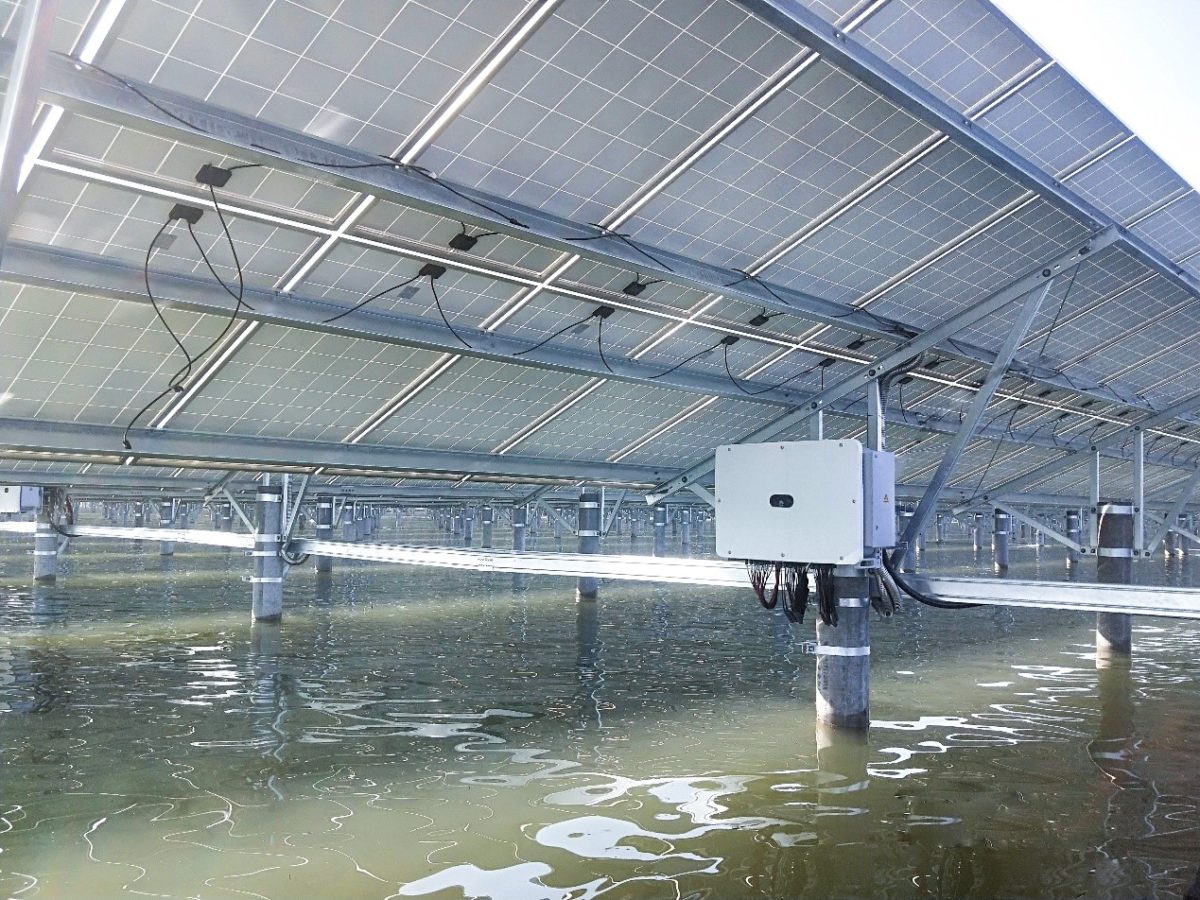Scientists at the Chinese Academy of Sciences have measured the effects produced by utility scale fishery solar plants on the local micro-climate and the water temperature.
Their modeling was applied to a simulated 10MW solar plant at a fishery located in Yangzhong, in China's northern province of Jiangsu. The south-oriented solar plant is split into four units with a surface ranging from 2.3 to 3.6ha and built with polycrystalline modules that are placed on bracket bases on buried concrete columns, with a distance of six meters between each module row. The modules were installed with a tilt angle of 34.6 degrees and the lower edge sited 1.6m above the water surface.
Two 11m meteorological towers were used to take measurements of the local surface climate. “Each observation tower was equipped with a radiation system, an eddy covariance (EC) system, and three compact weather stations placed at different heights on the meteorological towers,” the researchers specified. The EC method is used to calculate the site's covariance of fluctuations in the vertical wind velocity and in the physical quantity. Measurements were taken for temperature, humidity, pressure, wind speed, wind direction and precipitation. Furthermore, the research team measured the water temperature at three different depths, of 0.05m, 0.75m, and 1.5m.
Through this analysis, which compared the impact of the PV plant site with that of a reference site with no solar array, the academics found that the fishery photovoltaic (FPV) plant had an “unobvious” heating effect on the surrounding environment during the entire observational period and that it also affected the wind speed and direction. “With the wind flowing through the FPV array, the tilted FPV panel resists the wind speed and changes the flowing air direction in the FPV site, relative to the reference site, to redistribute the wind pattern,” they emphasized, noting that the percentage frequency of east wind in the solar site at two meters decreased by 25.3% compared with the reference site.
As for the air temperature, the PV site showed temperatures ranging between 11.1 and 10.7 degrees Celsius, and the reference site between 10.8 and 10.6 degrees Celsius. Furthermore, the surface water temperature in the PV site was found to be 0.11 degrees Celsius higher than that in the reference site. “However, the FPV array represents a shading effect for deeper water, at 50 and 150cm. Therefore, the FPV array has a limited range of heating effect on water temperature,” the scientists further explained, adding that water at the solar site also absorbed higher heat than in the reference site.
“The long-wave radiation increased after the PV site was installed, which indirectly confirmed the existence of the thermal effect of the PV power site on the lake surface,” said researcher Gao Xiaoqing. “However, the data showed that the FPV array still had a limited range of heating effect on water temperature.”
Their findings are in the study “Effects of fishery complementary photovoltaic power plant on near-surface meteorology and energy balance,” published in Renewable Energy. “This study provides data [support] for the development of FPV power sites in the lake surface, which will help to realize sustainable development of solar energy resources and carbon goals,” they concluded.
This content is protected by copyright and may not be reused. If you want to cooperate with us and would like to reuse some of our content, please contact: editors@pv-magazine.com.




2 comments
By submitting this form you agree to pv magazine using your data for the purposes of publishing your comment.
Your personal data will only be disclosed or otherwise transmitted to third parties for the purposes of spam filtering or if this is necessary for technical maintenance of the website. Any other transfer to third parties will not take place unless this is justified on the basis of applicable data protection regulations or if pv magazine is legally obliged to do so.
You may revoke this consent at any time with effect for the future, in which case your personal data will be deleted immediately. Otherwise, your data will be deleted if pv magazine has processed your request or the purpose of data storage is fulfilled.
Further information on data privacy can be found in our Data Protection Policy.